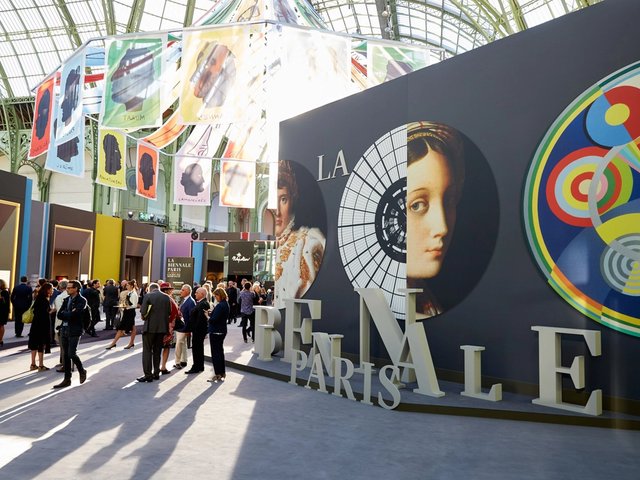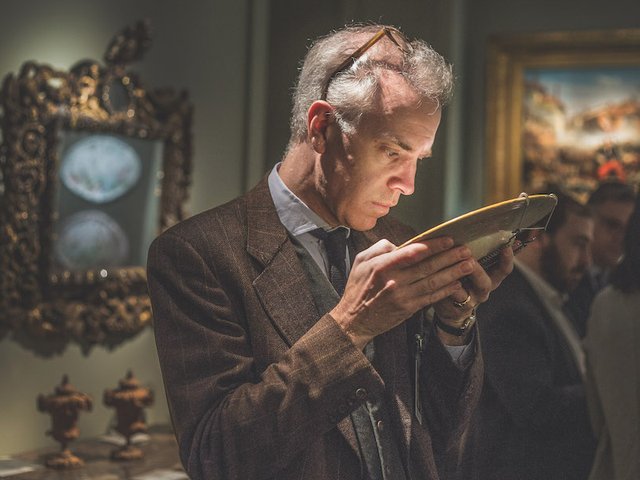An aggressive display of strength from authorities has prompted heated debate around this year’s edition of the Brussels Antiques and Fine Arts fair (Brafa) (26 January to 2 February), where 34 ancient Egyptian, Asian and tribal artefacts were seized during public opening hours.
It is believed that all but one of the seized items were from the estimated 85 pieces that had been vetted off stands by the event’s committee of art and antiques experts before the fair opened, but no further details about the objects or the dealers concerned have been confirmed.
It is not uncommon for authorities, in this instance Belgium’s Federal Public Service (FPS) Economy and Customs, to have a presence at such major art trade events. It is unusual, however, for the inspection of exhibits or associated questioning to occur during public opening hours.
“I’ve participated in fairs in a variety of countries where authorities did routine checks,” says Vincent Geerling, the chairman of the International Association of Dealers in Ancient Art. “However, this has been done discreetly, working with the fair and before the fair opened. What happened [at Brafa] was unacceptable. The authorities came in and conducted checks when the fair was open to the public, with up to four officers huddling around a stand, looking at pieces indiscriminately and handling objects without permission. It’s unheard of.”
The intensity of the questioning also caused concern, with numerous dealers and visitors at the event referencing an unnecessary display of power.
The reasons provided for the seizure of particular items remains unclear, but fair organisers are keen to reiterate that the “vetting” off of an item from the fair floor should not be equated with anything other than a decision that it is not suitable for “exhibiting”. Consideration is focused on the quality, attribution or authenticity, rather than any concerns over the legitimacy of the sale.
Items that are vetted off are placed in a locked “reserve” space, which was inspected by the authorities, over and above their more routine circuit around the public floor. The authorities requested (and were provided with) the vetting list from the fair, which, again, is not routine for such checks.
Yves-Bernard Debie, an international lawyer who advises several of the exhibitors who were questioned, says: “All the dealers I know felt genuinely assaulted in the middle of the fair and in front of customers. It was a real ‘lightening raid’ whose aim was to impress… [The fair] should have made sure that the vetting notes (which are ephemeral by nature) were not kept, as this is not their purpose.”
A spokesperson for the FPS says: “We do not provide any details on the reasons and manner of the Economic Inspectorate’s controls.” A representative from Interpol insisted that “[they do] not get involved with such private events”, despite reports that they were also present.
Belgian media reports immediately following the event named numerous dealers, prompting fair organisers to issue a statement confirming its regret over “the poor image and ideas that may arise from the publication of incorrect information, in the case of usual and routine procedures, which has been ongoing for many years”.
The event organisers insist that sales were strong and there were record attendance figures (68,000 visitors), which meant that most exhibitors were happy. “[These] checks leaked into the press and the authorities were the first to regret that, as do we,” a spokesman says. “Unfortunately, it created a sort of sad and exaggerated buzz.”
Such a public display from enforcement is reminiscent of the 2017 seizure of an ancient bas-relief from the UK-based antiquities dealer Rupert Wace, during the opening of Tefaf New York Fall—the parties later settled out of court. Alongside increasing regulations—notably the Fifth EU Anti-Money Laundering Directive introduced this January—it appears that the art market is beginning to feel the impact of greater scrutiny.





